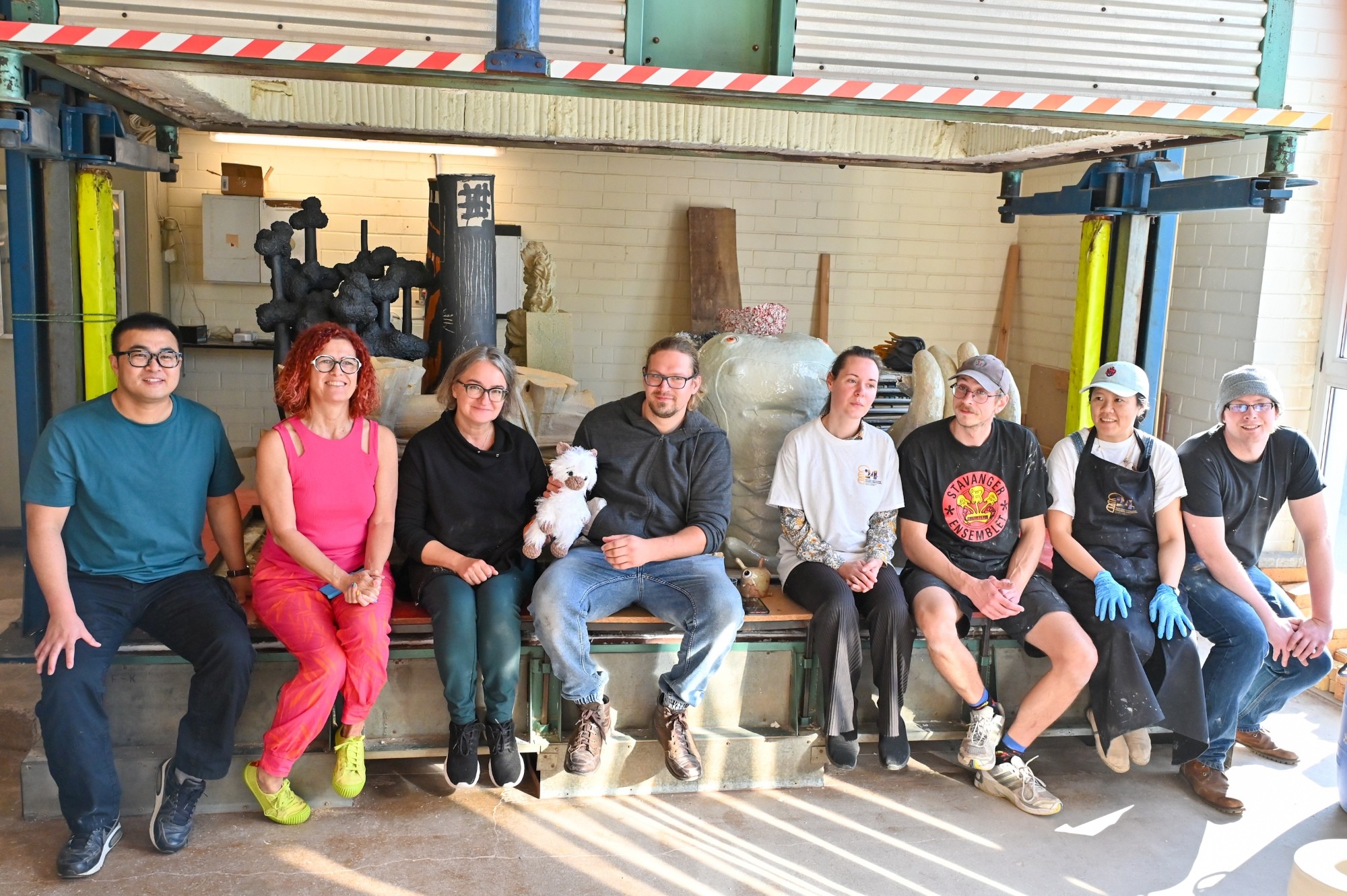By Aurelija Seilienė
In the green city of Panevėžys, Lithuania, resides an expansive collection of contemporary ceramics. While the locals may not be entirely aware of the city’s international ceramic symposiums, Panevėžys stands as a distinguished hub for global ceramists. Within the Baltic region, only three principal events underscore the realm of ceramic symposia: the Kohila Symposium in Estonia, the Ceramics Laboratory in Latvia, and the Panevėžys International Ceramic Symposium in Lithuania. Consequently, the Lithuanian manifestation emerges as a preeminent fixture within the domain of artistic discourse.
Ceramic symposiums in the Baltic region
According to Lithuanian ceramist Eglė Einikytė-Narkevičienė, who has participated in all three symposiums, they are very different in their spirit. Kohila and Panevėžys international symposiums have deep traditions dating back more than 20 years. Meanwhile, Ceramics Laboratory has been running for over ten years. As E. Einikytė-Narkevičienė mentioned during the Kohila symposium, the main focus is on the process, not the result. This is where teamwork takes place during firing, and personal artists’ ambitions can be changed during this process. In the Ceramics Laboratory symposium, the idea is the sharing of ideas. Wide opportunities are provided for everyone to realize their creative ideas; however, the sizes of the works are limited. In Panevėžys, according to her, you can decide everything by yourself from A to Z. It is possible to control the process in terms of size, glazes, and quantity.
Kohila Symposium is an annual international wood-fired ceramics event held since 2001 in Kohila City, Estonia, and has already hosted 230 artists from 35 countries. The first anagama-type kiln was built in the Tohisoo Manor Park. Every year, organizers invite up to 11 artists for a three-week working process. After every symposium, there is an exhibition of creative works left to the collection of the event. Since 2021, there has been a biennale parallel program at the symposium involving the making and firing of a fire sculpture.
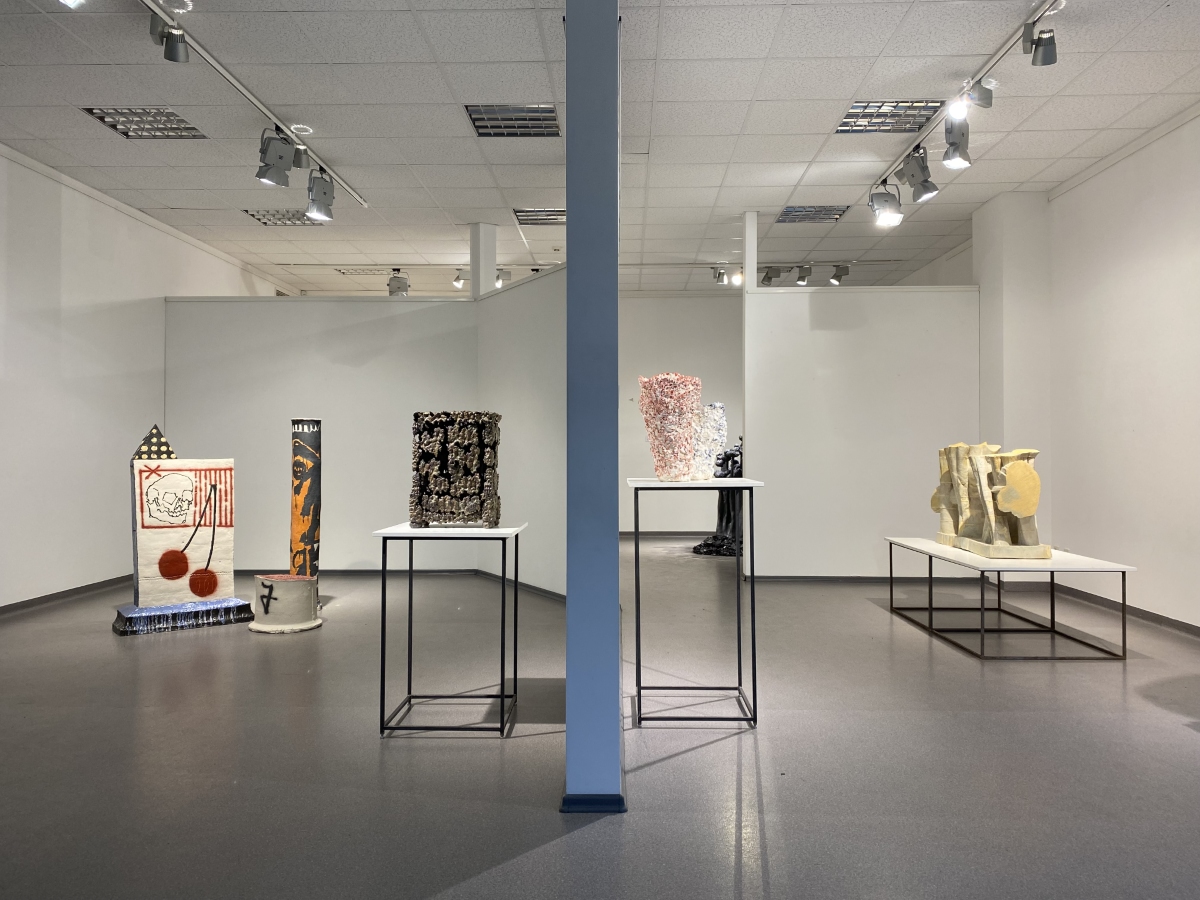
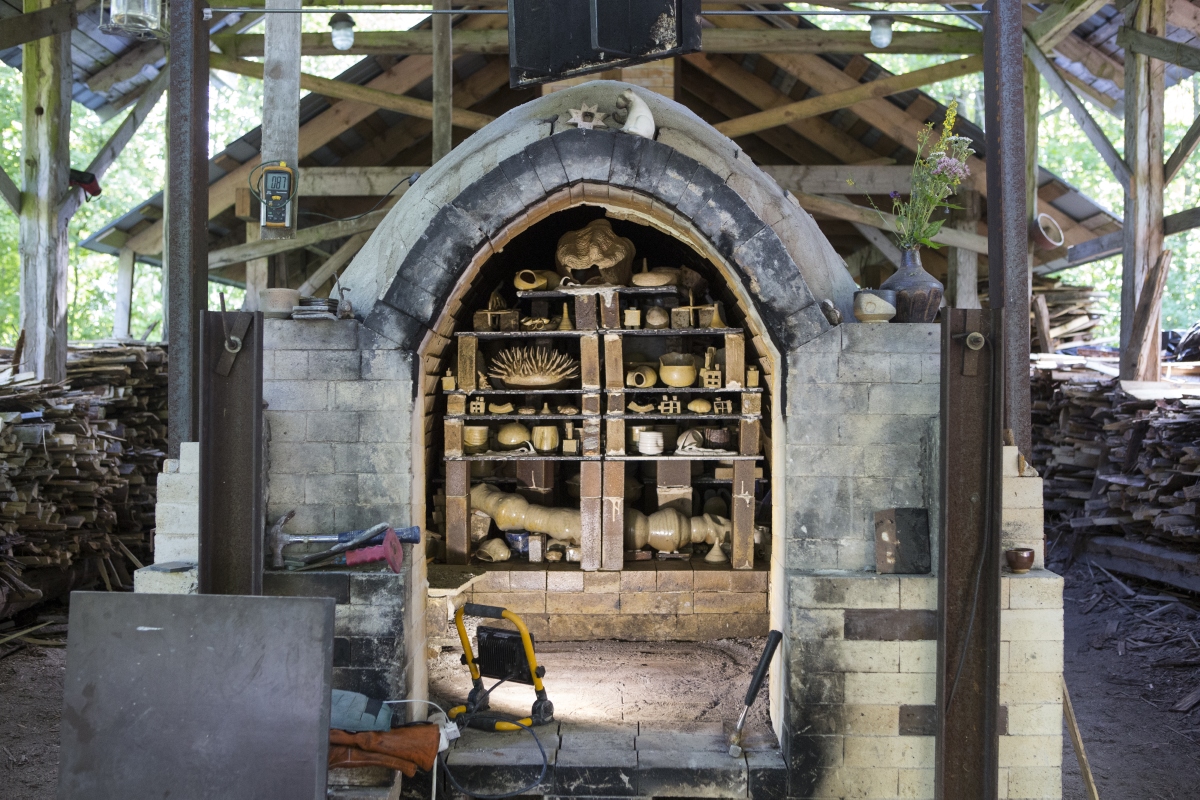
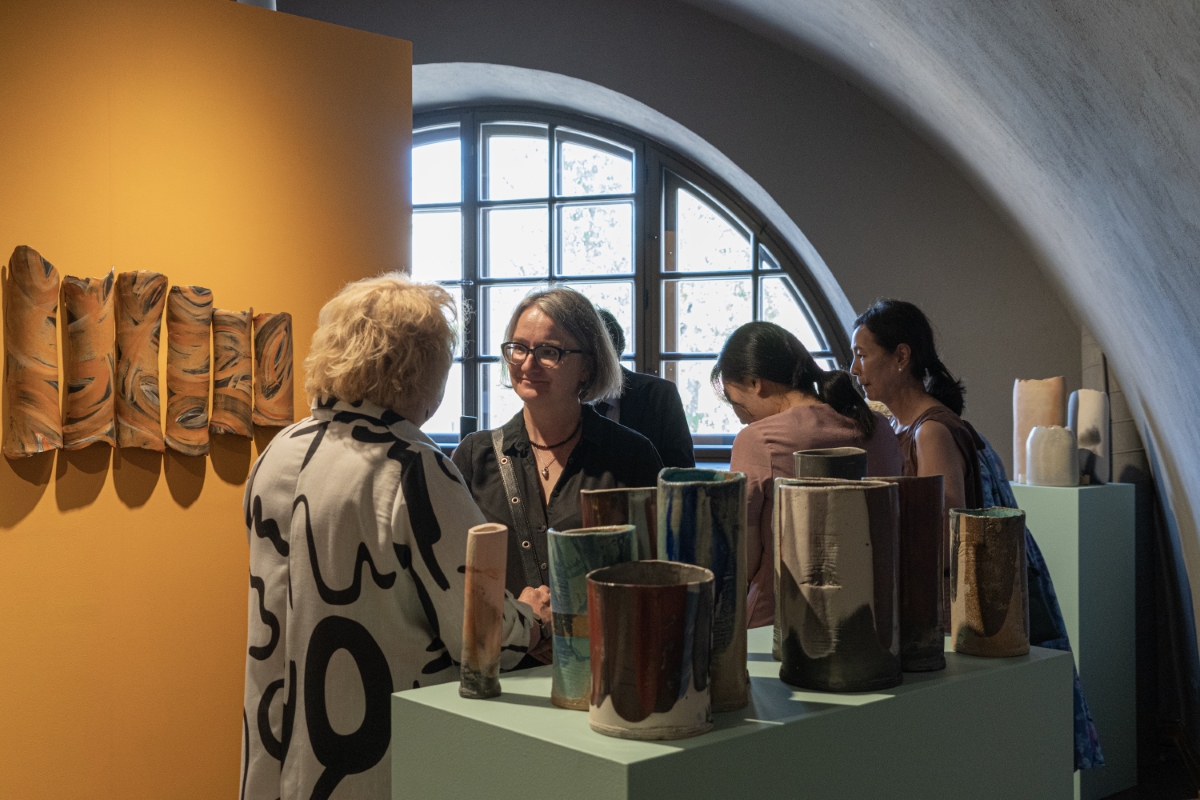
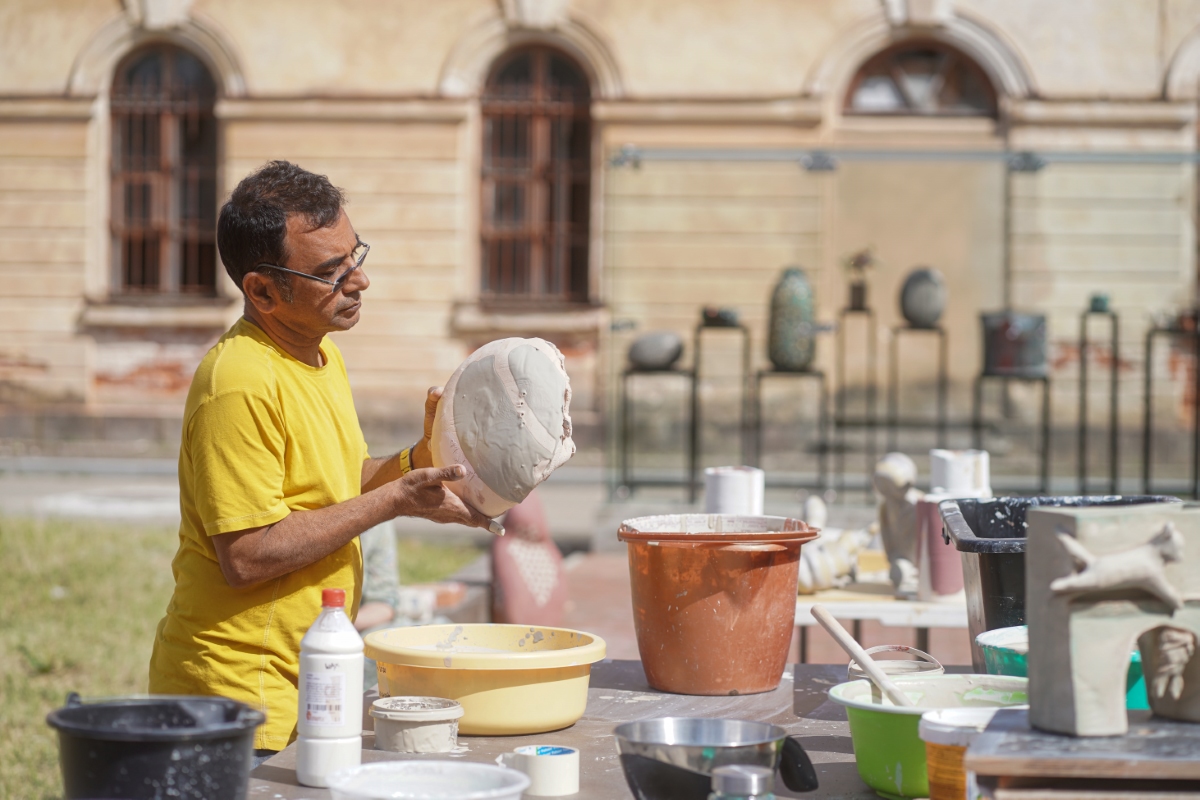
Ceramics Laboratory in Daugavpils, Latvia, has been held since 2013. It is also an annual event that brings together around 10-15 participants from abroad and from Latvia to support the local community. The organizers are the Latvian Centre for Contemporary Ceramics and the Daugavpils Mark Rothko Art Centre (now the Rothko Museum). Artists are invited to abandon their usual principles, images, and forms of creative activity and to indulge in experiments, thus finding new ways and means of complementing their creative work in the future. For two weeks, they can experiment here with different firing techniques. Their works show the encoded cultural signs characteristic of different nations and cultures. This symposium culminates in exhibitions, master classes, workshops, lectures, and the firing of a fire sculpture. Since the inaugural symposium, over 100 ceramists from 32 countries have participated.
The history of Panevėžys International Ceramic Symposium
More than three decades ago, in 1989, the first Panevėžys International Ceramic Symposium was organized on the initiative of young students and graduates of at-that-time Vilnius Art Institute (now Vilnius Academy of Arts), which was attended by 16 artists from various fields of art. The first international ceramics event in Panevėžys was very different from the current symposiums, but it was characterized by vigor, youthful energy, and intense creative mood.
The first steps towards the international ceramics symposium began in 1977 when a Vilnius Art Institute student, Alvydas Pakarklis, started working at the Panevėžys Glass Factory. His interest in the refractory stone mass used in the glass manufacturing industry led to the experiment with this material. The creative process was welcomed and supported by the management of the Glass Factory, especially the Director at that time, Stasys Stoškus. In 1983, students of the same art institute, led by Professor Juozas Adomonis (1932–2022), who also participated in the symposium in 1999, came to the factory for creative practice. Since 1984, creative seminars of Lithuanian ceramic artists have been organized here. The artists always used a high-combustion gas kiln to fire the works at 1380°C. The exceptional size of the kiln (height – 1.80 m, area – 12 m², volume – 20 m3) allowed the creation of works of impressive scale, which later became the hallmark of the collection and the symposium itself.
At the very end of the 1990s, students of Vilnius Art Institute Tomas Daunora, Arūnas Rutkus, and the graduate Rimantas Skuodis (1951–2015) started organizing the first international symposium. They invited Philip Cornelius from the United States of America (1934–2015), the Lithuanian-born American Rimas VisGirda, and the Hungarian Katalin Högye. Together with them, a group of Lithuanians took part here: Romualdas Aleliūnas (1960–2016), Valdas Aničas, Vilija Balčiūnienė, Eugenijus Čibinskas, Nerutė Čiukšienė, Alfridas Pajuodis, Egidijus Radvenskas, Aldona Skudraitė, Gintautas Šveikauskas and Vytautas Tallat- Kelpša. A number of other Panevėžys artists also regularly performed in workshops, although they have not been considered official participants. The creative process took place at the Children’s Art School (on the premises of the former Chapel), the firing took place at the Glass Factory, and the exhibition of the created works was opened at Panevėžys Drama Theater (now Juozas Miltinis Drama Theatre). The first symposium was experimental in nature and laid a strong foundation for the creative process in the future.
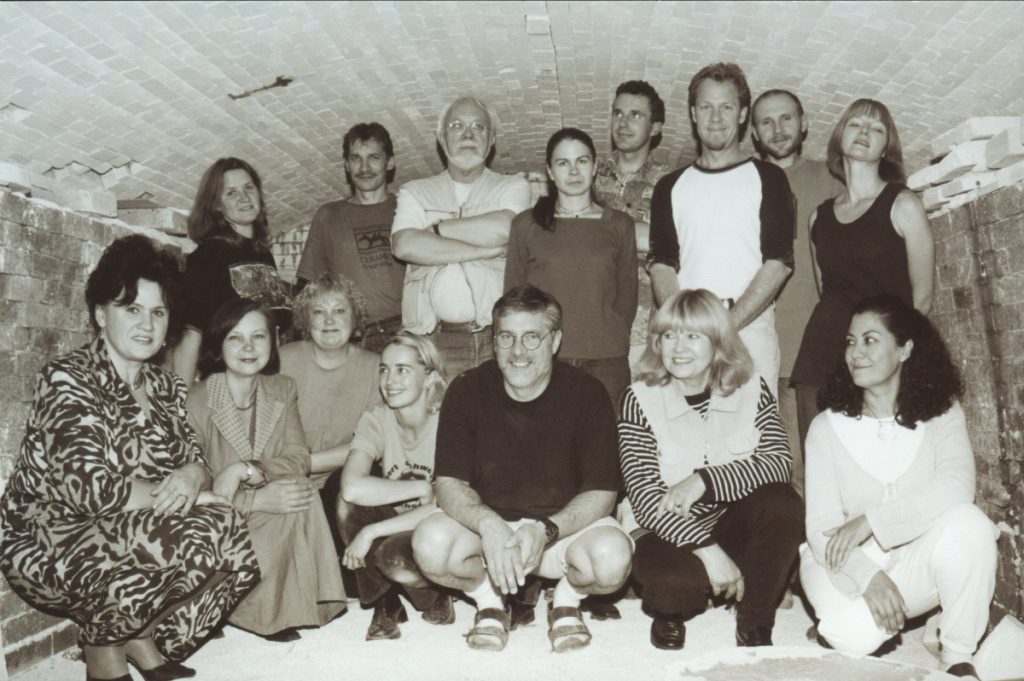
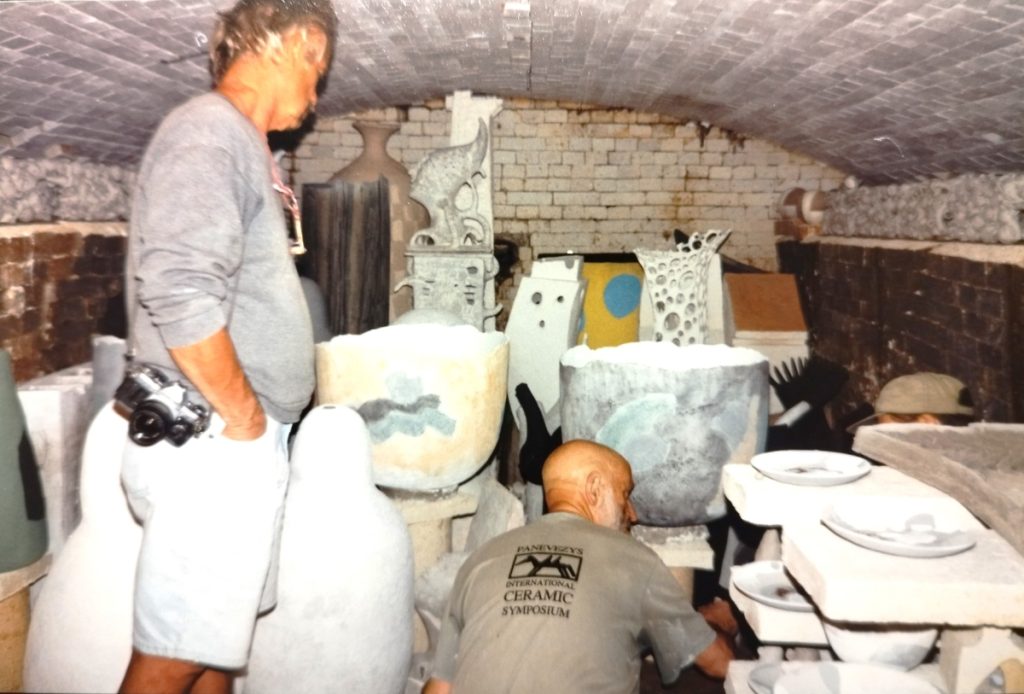
When the City Council of Panevėžys established the Art Gallery in 1990, it was responsible for organizing these events. Until 2016, the Director of the Gallery at that time, Jolanta Lebednykienė, has been taking care of organizing the symposiums. Thanks to her efforts, 20 symposiums have been held. Then, symposiums lasted for almost five weeks. Now, the time of the event is a bit more than three weeks.
Chamotte clay used in the creative process is often called “Panevėžys stone mass” by art critics (the stone mass is indeed transported from Ukraine), which shows this event’s importance and position. In more than three decades, 24 symposiums have already taken place. Until 2002, symposiums were held annually at the Glass Factory; since 2004 – every second year, and since 2006 – at a Ceramics Company, “Midenė.” This company produces high-quality artistic ceramics for indoor and outdoor spaces and now has the biggest gas kiln in Lithuania, which is 1.50 m high, with an area of 4,5 m2 and a volume of 6,75 m3. “Midenė” art studios have a lot of working space. Here, participants of the symposiums can work in groups of two or three people (now, about 7-8 artists participate in one symposium). They can also use smaller electric kilns at their own expense. Every participant gets ~150 kg of clay; later, they can use glazes and engobes mixed by “Midenė” or their own glazes and other decor elements.
The fact is that 186 artists from 37 countries took part in these symposiums. The collection now consists of almost 700 works and compositions. This type of large-scale collection of stoneware contemporary ceramics is the only one in the Eastern European region. Currently, in Lithuania, it is the only permanent exposition of contemporary ceramics in the country.
Highlights of the 24th Symposium
In 2023, as many as eight ceramicists from Lithuania, Brazil, the United Kingdom, Poland, Ukraine, Taiwan, and South Korea participated in the 24th symposium. There was no lack of either happy discoveries or bitter disappointments in the creative process. As always, the ambitions of the artists are fulfilled or cut short by one of the main co-authors, the fire, whose grace depends on the happy or disappointing results that await the participants and visitors of the exhibition.
The works of each year’s symposium seem to be divided into several groups, united and separated by ideas and forms, because participants are not asked to work on specific topics. This year was no exception. The created works can be grouped into natural shapes and architectural and structural forms. The works of some authors talk about the intermingling of these two groups; for example, the works of Dmitrij Buławka-Fankidejski, the Polish (b. 1988), suggest a constant change and dependence on each other. The forms he creates are somewhere between a natural and a specially designed shape. The author investigates connections between visible and invisible phenomena that form nature and transfers them into his sculptures. Works of Dmitrij are not finite because they are created so that they can constantly change, grow, and live on, no longer depending on the artist’s decisions, simply under the influence of nature. The artist is originally a sculptor, so sculpting methods shape his works. He uses forms made from foam; clay is put in there, and then the foam is removed. This kind of method lets the artist create big, solid forms. Also, he uses natural, bright colors to enhance the impression of nature. As very aptly noticed by Lithuanian art critic and historian Lijana Šatavičiūtė-Natalevičienė, his works are not inseparable from technological performance and emphasis on content. By this outlook, D. Buławka-Fankidejski is a real modernist.
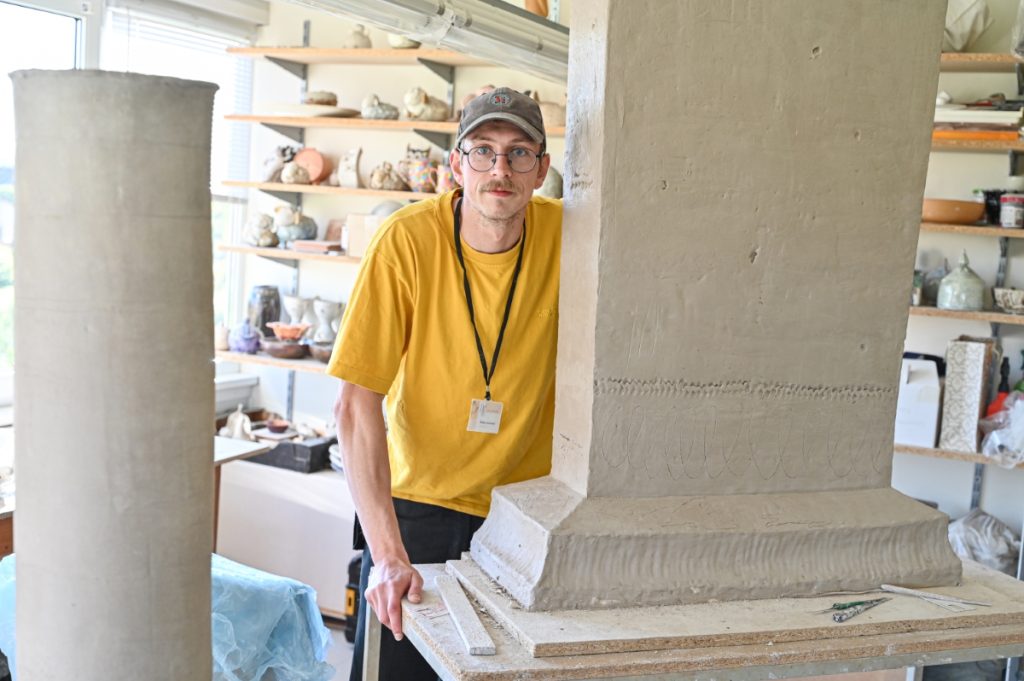
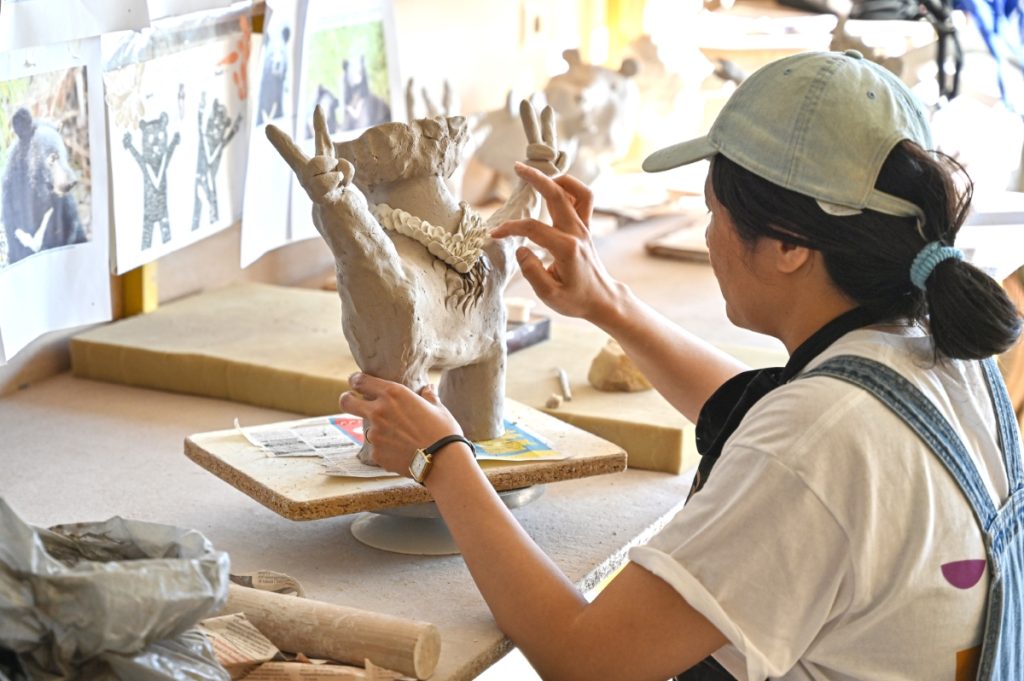
The creation of Agnė Šemberaitė, the Lithuanian (b. 1972) is multi-layered. Narrative and plot are essential in her works. As in all of the ceramic artist’s work, the work created during the symposium is a mixture of the real and the fictional, the real and the surreal. The author sculpted the deity in the form of a caterpillar – full, calm, all-seeing, and somewhat repulsive, but at the same time inspiring confidence. What remains unclear is whether the metamorphosis will end in a fully human shape or whether the insect origin will finally swallow up any remaining humanness. The artist obtained a master‘s degree in ceramics in 1998 at the Vilnius Academy of Arts; now, she is the chairman of the Vilnius Ceramics Section of the Lithuanian Artists’ Association. In 2022, she won the Gold Prize (in the international category) at the Latvia Ceramics Biennale “Martinsons Award 2021” at the Mark Rothko Art Center in Daugavpils, Latvia.
In her work, Maryna Handysh, the Ukrainian artist (b. 1989), explores the process from the emergence of subconscious images to their transformations when a material shape is born. During the 24th symposium, Maryna created several large sculptures – unfolding flowers, symbolizing the hope that emerges from the depths of a person. The powerful palm not only holds the blossoms but also serves as a safe haven. Usually, she engages in artistic practices of an experimental nature, combining different materials and technologies in her work.
Plant motifs also appear in the works of Viviane Diehl, the Brazilian, born in 1964. She continues her “Forests” series with a tall group of burnt trees. This series promotes aesthetic and, at the same time, symbolic experience, reflections on the relationship between man and nature, and environment and everyday challenges in the modern world. Just as forests are constantly burning, our souls smolder in times of global burnout. Viviane is an artist, art and culture coordinator, lecturer, and researcher who is a frequent guest at various ceramics symposiums. The artist delves into the challenges of the environment and everyday life in the modern world and the interrelationships between ancient and contemporary cultures.
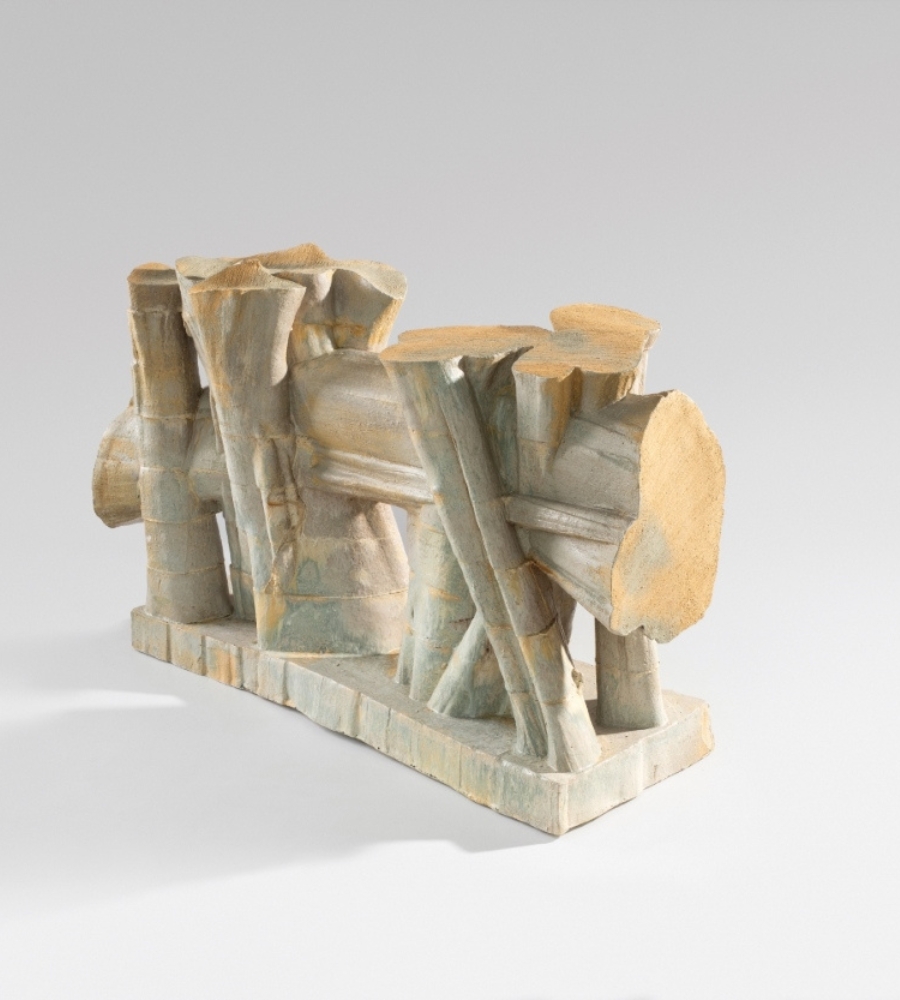
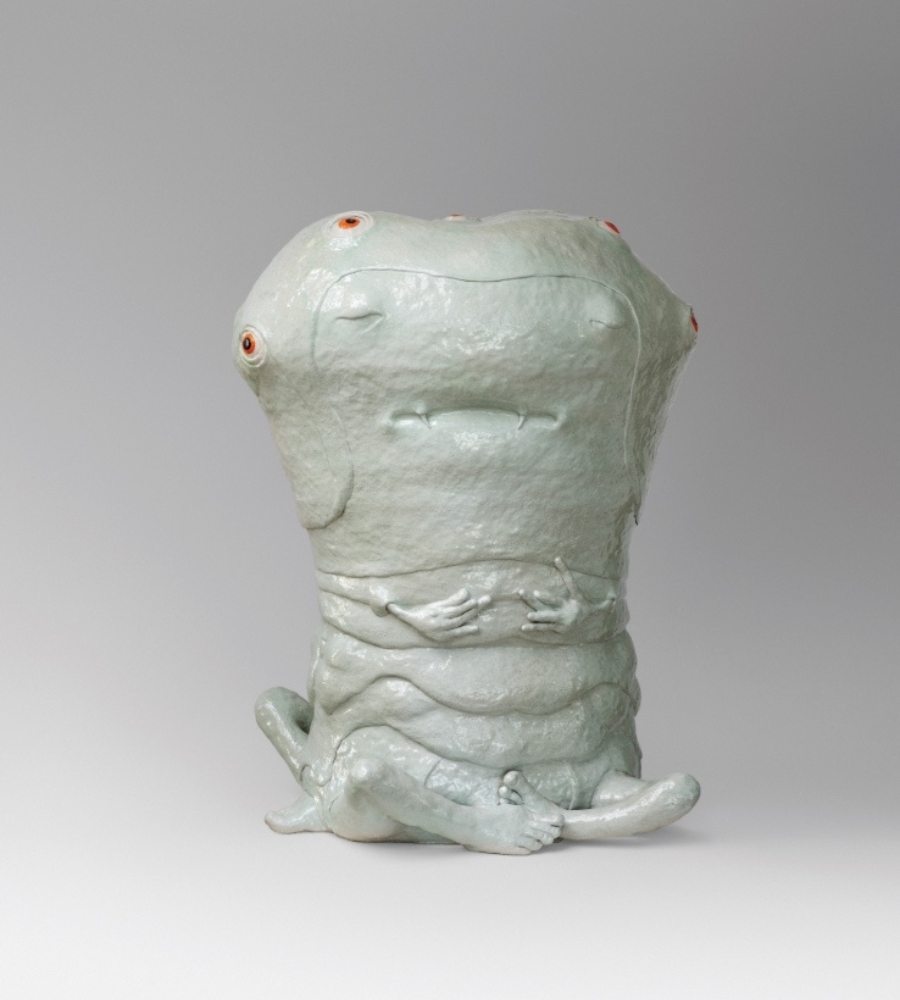
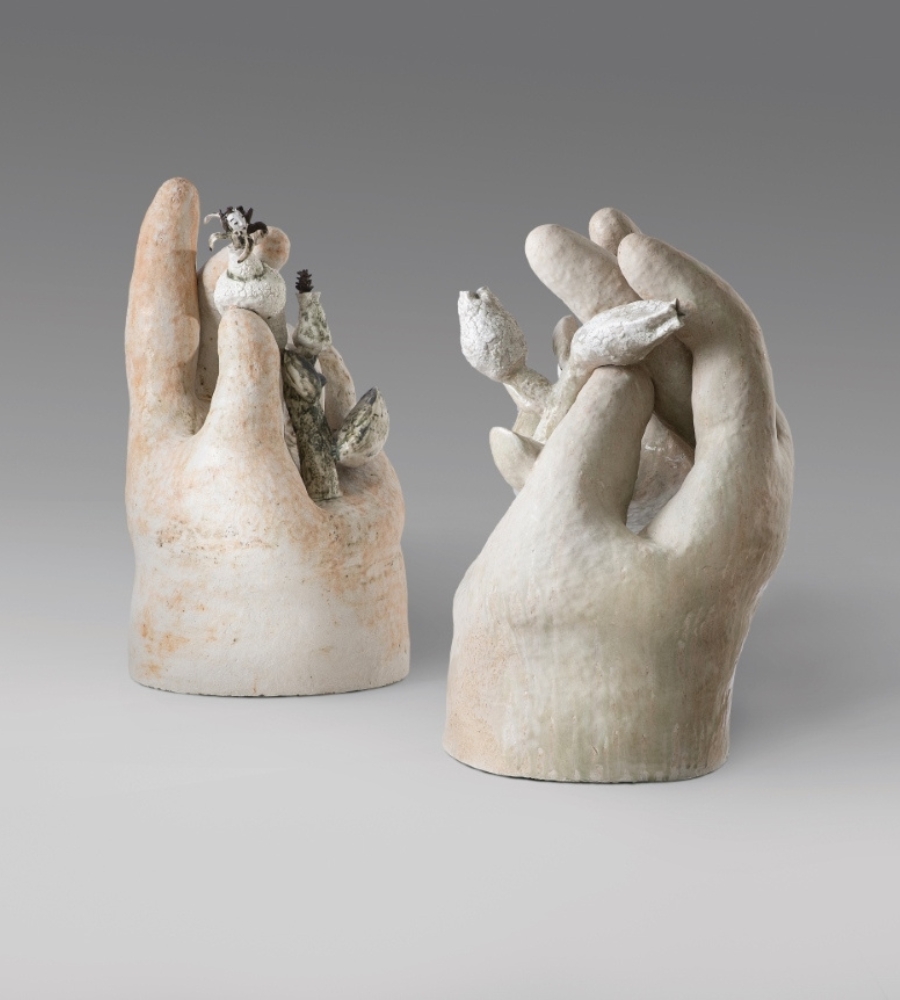
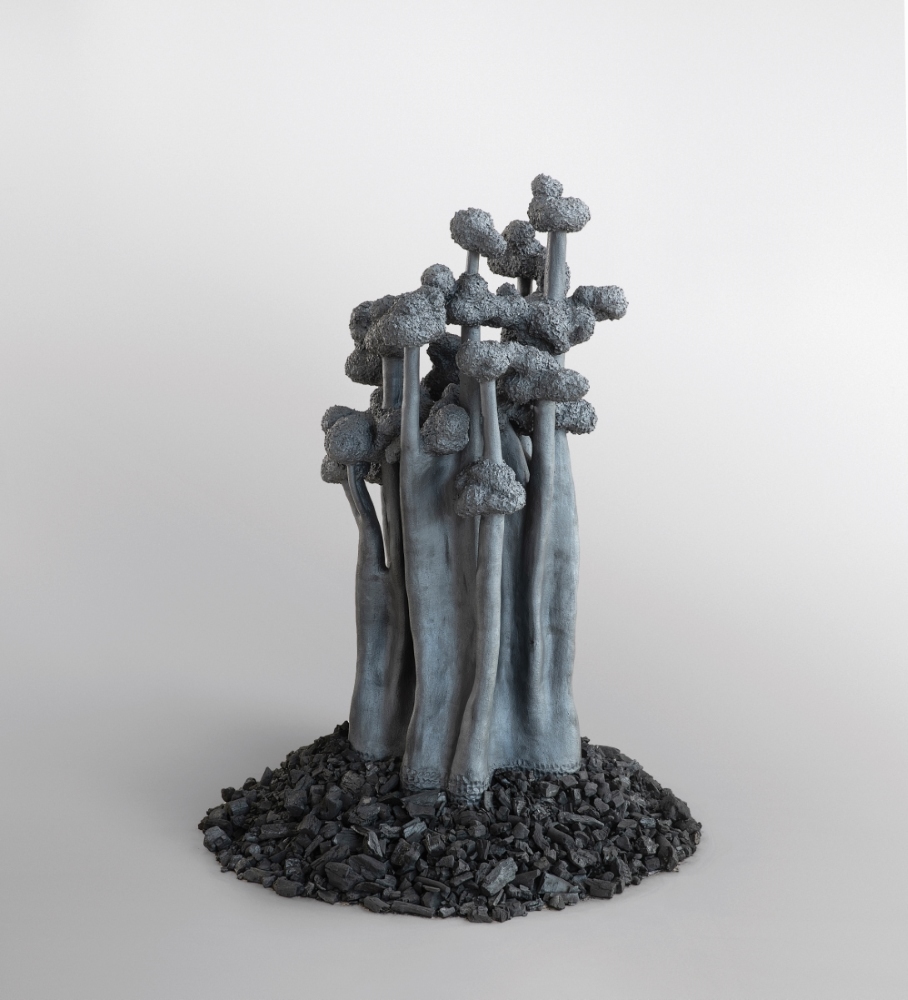
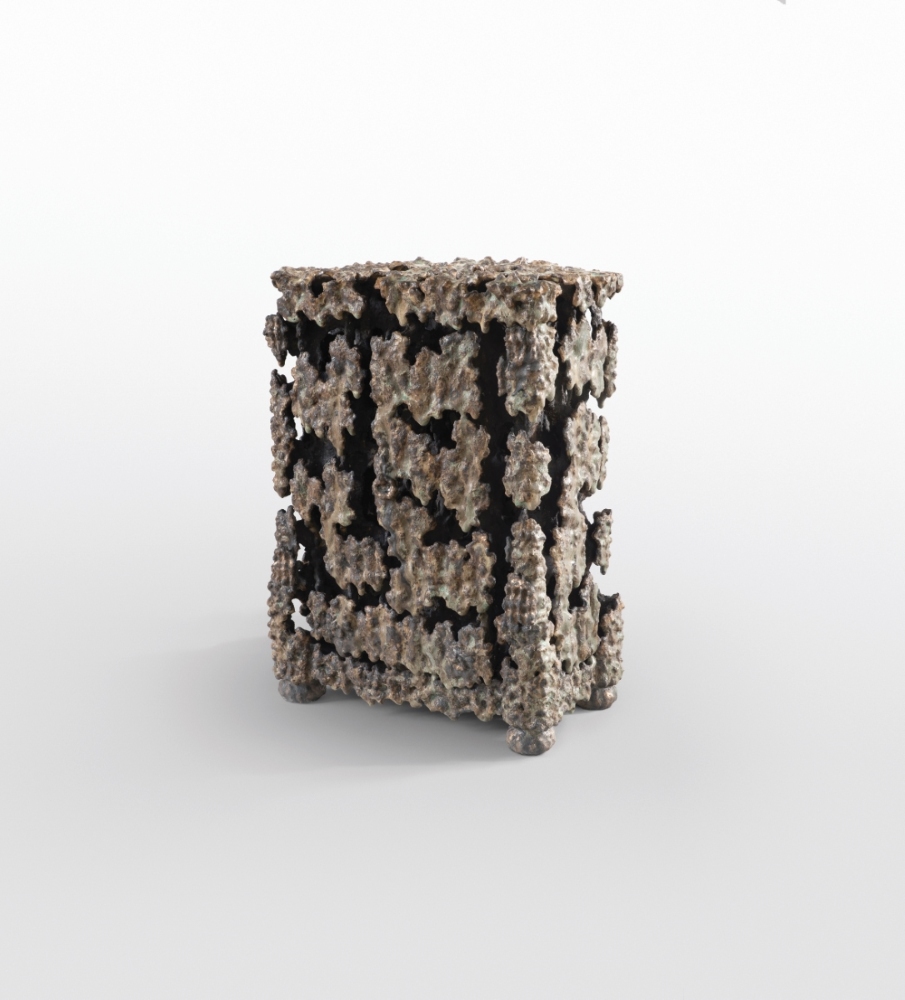
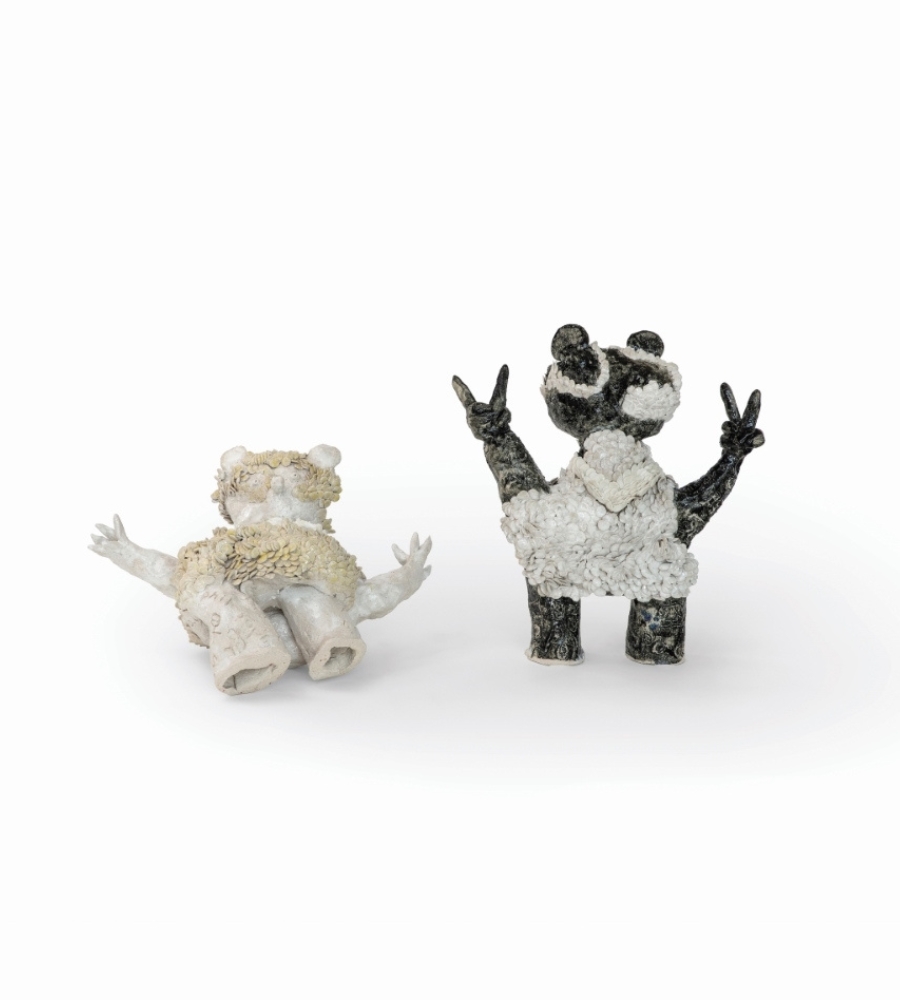
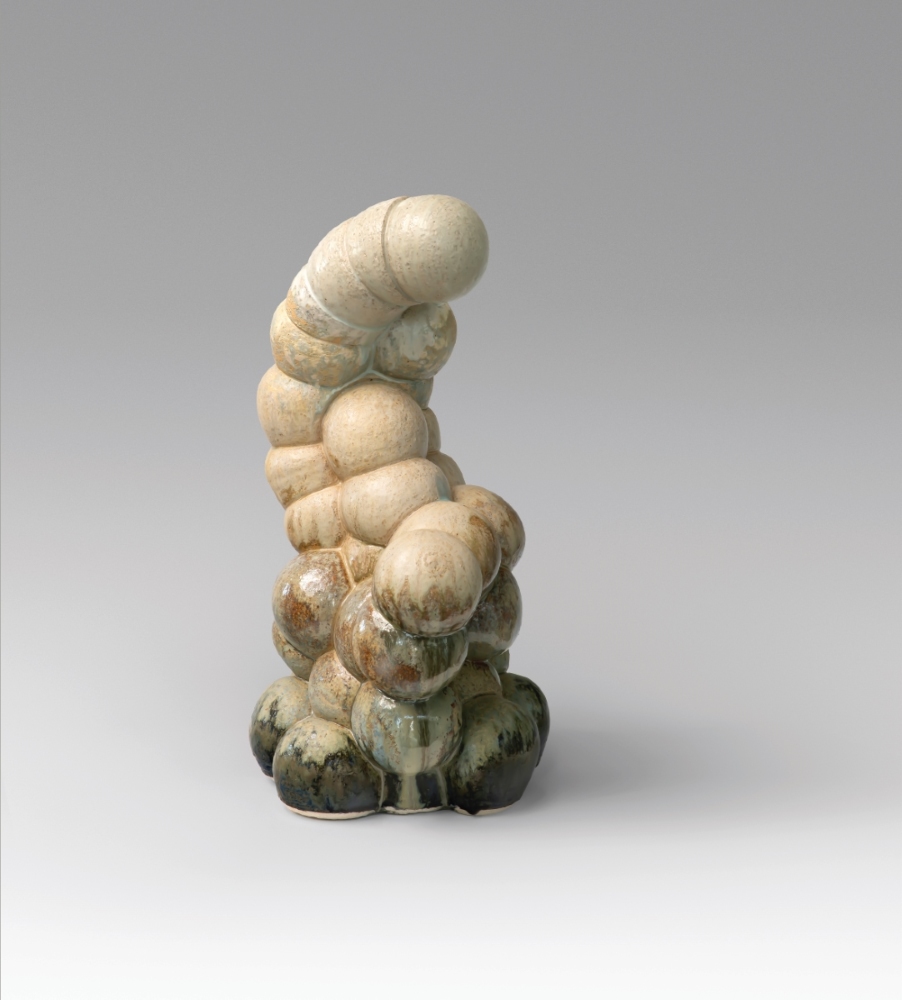
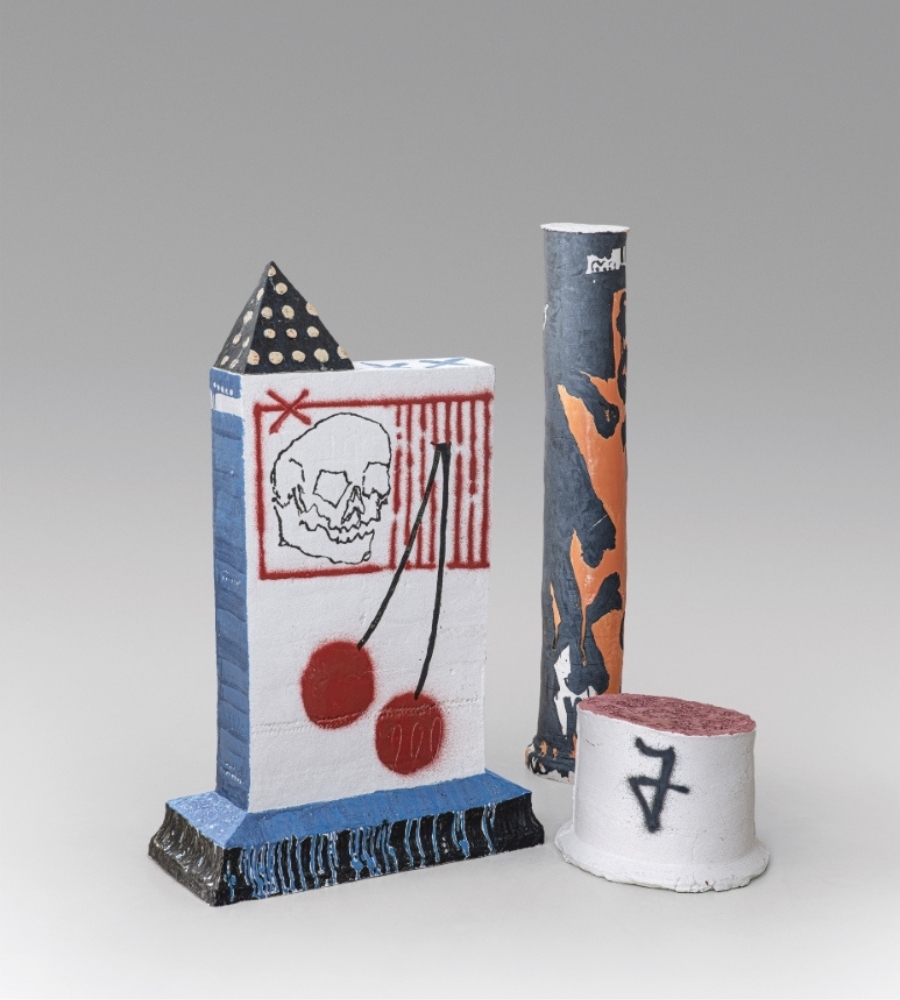
Sunbin Lim, the South Korean representative (b. 1981), also looks for inspiration in specific decay processes. The motifs of his works come from old ruins (old architecture – human origin) and nature that is constantly changing and simultaneously dying (natural origin). Observing the structures, inner spaces, and surface textures of these formations, Sunbin Lim discovers imperfect beauty. Using these ideas, he also creates objects affected by the erosion of time. Sunbin finished his ceramic studies in South Korea and Germany as well. He has won significant awards, including the first prize at the “Cluj Ceramics Biennale” in Romania in 2019 and others.
Wen-Hsi Harman, the Taiwanese artist (b. 1984) living in the United Kingdom, also looks for connections between the two poles. She explores cross-cultural identity. Being in an intermediate state between two cultures gives her the basis to examine such a state when it seems completely independent from one community or the other. Studies of ceramics and art history (she earned a Ph.D. in philosophy) allow her to delve deeper into the study of ceramics. The author tries to reveal her identity using the image of the Formosan Himalayan bear (an endangered species). His V-shaped white collar evokes the victory symbol popular in Western culture. The ceramicist also decorates the surface of the work with small flakes that symbolize fingerprints – signs of uniqueness and exclusivity. Martin Harman, his husband (b. 1986), is far from figurative representation. He bases his work on precise geometric forms, which he modifies and creates new structures. Interestingly, his inspirations are natural architectural monuments, such as Stonehenge. The author is close to a small scale, so even during the symposium, he did not stray too far from his usual size, but the color range changed significantly. From brightly colored solutions, he moved to a relatively moderate color of earth tones. It is no secret that such decisions are dictated by high-firing technology.
Geometric forms and architectural structures are important to Rokas Janušonis, the Lithuanian artist born in 1997. The young artist, who has just completed his master’s studies in ceramics at Vilnius Academy of Arts, looks at clay as a universal material and another tool for expressing an idea, rejecting the craft and functionality typically associated with ceramics. Rokas connects the ceramic volume with the graphic line and explores their interaction. He also used this model for his work at Panevėžys Symposium. The artist actively participates both in the exhibition field and in various competitions of young artists.
The tradition of Panevėžys International Ceramic Symposiums is significant in many aspects. The beginning of the event was a unique opportunity for Lithuanian ceramic artists to become acquainted with the traditions and attitudes of other countries. Now, we can assert that these symposiums have entered the history of Lithuanian art. They formed the creative personality of many ceramic artists, provided knowledge and opportunities, and encouraged improvement. The main goal of the symposium is to unite artists to share ideas. The results are always gratifying in any case, whether they are exactly as expected, unpredictable but positive, or not as expected. However, participants leave not only new works in the collection of the Art Gallery but also memorable experiences and impressions in the participants’ memories.
Aurelija Seilienė is a Lithuanian art critic and curator working in visual arts, mainly ceramics. She earned her Master’s in History and Theory of Arts from the Vilnius Academy of Arts. Seilienė published numerous articles in the Lithuanian cultural press, compiled catalogs about visual arts and ceramics, and wrote introductory articles. She also worked as an expert in various exhibition selection commissions and project financing programs.
Captions
- 24th Panevėžys International Ceramic Symposium exhibition fragment, 2023. Photo by Vilija Visockienė.
- Kohila Ceramic Symposium. Photo by Annika Haas.
- Working process at Ceramics Laboratory. Photo by Pavels Terentjevs.
- Ceramics Laboratory exhibition fragment. Photo by Pavels Terentjevs.
- Participants and organizers of 12th Panevėžys International Ceramic Symposium in the kiln at Glass factory. 2000. Photo by Sergejus Kašinas.
- The kiln at Glass factory. 1998. Photo by Jolanta Lebednykienė.
- Participants of 24th Panevėžys International Ceramic Symposium in front of the kiln at „Midenė“. From left to the right: Sunbin Lim, Viviane Diehl, Agnė Šemberaitė, Dmitrij Buławka-Fankidejski, Maryna Handysh, Rokas Janušonis, Wen-Hsi Harman, Martin Harman. Photo by Gediminas Kartanas.
- Working process at 24th Panevėžys International Ceramic Symposium. Photo by Gediminas Kartanas.
- Working process at 24th Panevėžys International Ceramic Symposium. Photo by Gediminas Kartanas.
- Dmitrij Buławka-Fankidejski. „Phenomenon“. 2023, stoneware, glaze, 70x110x35 cm. Photo by Marius Rudžianskas.
- Agnė Šemberaitė. „Receiver“. 2023, stoneware, porcelain, glaze, underglaze paint, 84x60x53 cm. Photo by Marius Rudžianskas.
- Maryna Handysh. „Pulsation“. 2023, stoneware, glaze, 80x53x50 cm, 85x50x50 cm. Photo by Marius Rudžianskas.
- Viviane Diehl. „Burnout“. 2023, stoneware, engobes, 135x70x70 cm. Photo by Marius Rudžianskas.
- Sunbin Lim. „Wardrobe“. 2023, stoneware, glazes, 50x37x21 cm. Photo by Marius Rudžianskas.
- Wen-Hsi Harman. „Love & Peace“. 2023, stoneware, porcelain, glazes, 31x38x20, 34x32x16 cm. Photo by Marius Rudžianskas.
- Martin Harman. „Bubbles“. 2023, stoneware, glazes, 50x27x25 cm. Photo by Marius Rudžianskas.
- Rokas Janušonis. „Set Pnvz“. 2023, stoneware, engobes, glaze, h 140 ø26, h 111x83x31, h 36x44x48, h 24x27x16. Photo by Marius Rudžianskas.


